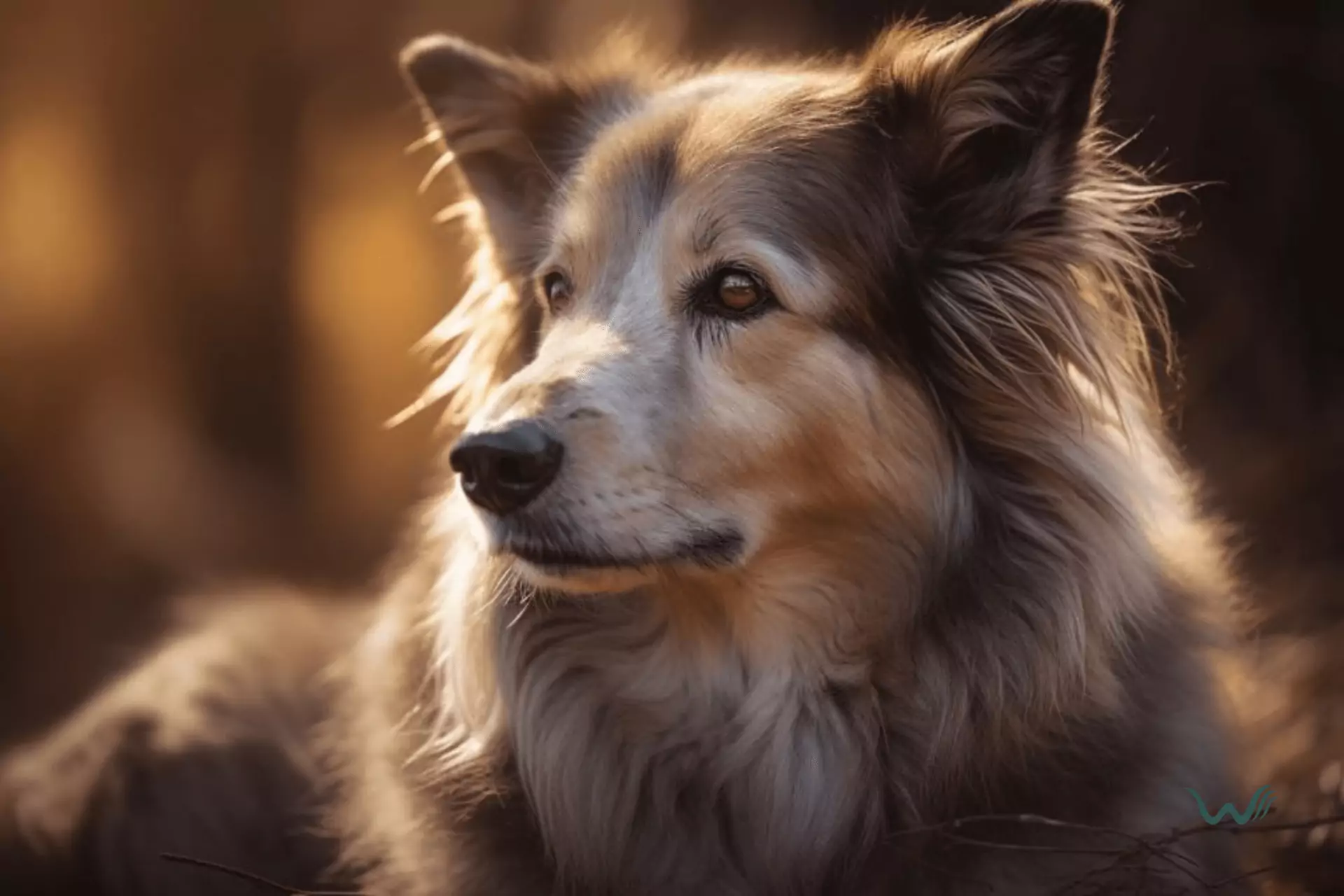

Transforming Rescue Dogs: Positive Training Journey
by Haley Mills
Last updated: April 21, 2024
Verified and Approved by:
Angela Morris,
MSW, LCSW
Fact Checked

Did you know that approximately 3.3 million dogs enter animal shelters in the United States every year? That’s a staggering number, but what’s even more remarkable is the untapped potential that lies within each of these rescue dogs.
They may have had a difficult past, but with the right approach, positive reinforcement training can unlock their true potential and transform them into loving and well-behaved companions.
Now, you might be thinking, "But how can positive reinforcement training really make a difference?" Well, my friend, it’s all about understanding the psychology of these rescue dogs.
Many of them have experienced trauma or neglect, which can lead to fear, anxiety, and even aggression. By using positive reinforcement techniques, we can help these dogs overcome their past and build a foundation of trust and confidence.
It’s like giving them a second chance at life, and the results can be truly remarkable.
So, get ready to embark on a journey of discovery as we delve into the world of positive reinforcement training for rescue dogs. Together, we will unlock their hidden potential and create a bond that will last a lifetime.
Key Takeaways
- Positive reinforcement training is an effective method to transform rescue dogs into well-behaved companions.
- Clicker training and target training are useful techniques for training rescue dogs.
- Building trust and bonding is crucial for developing a strong relationship with a rescue dog.
- Positive reinforcement techniques can address and overcome behavioral challenges in training rescue dogs.
Understanding Rescue Dog Behavior
Rescue dogs, like diamonds in the rough, often exhibit unique and complex behaviors that require a deeper understanding.
You might think you’ve seen it all when it comes to doggy antics, but rescue dogs take it to a whole new level. They have a special talent for surprising you with their quirky habits and oddball personalities.
One minute they’re zooming around the room like they’ve had one too many espressos, and the next minute they’re curled up in a ball, snoring so loudly you’d think they were auditioning for a snoring symphony. It’s like living with a furry comedian who always keeps you on your toes.
But behind all the funny quirks and entertaining behaviors, there’s often a deeper meaning. Rescue dogs have been through a lot in their lives, and their behaviors are often a reflection of their past experiences. They may exhibit fearfulness, anxiety, or even aggression as a result of trauma or neglect.
It’s important to approach their behaviors with empathy and understanding, just like you would with a friend who’s had a rough day. By taking the time to learn about their unique behaviors and what triggers them, you can help them overcome their challenges and unlock their true potential.
So buckle up and get ready for a wild ride with your rescue dog, because understanding their behavior is the key to building a strong and lasting bond.
Implementing Positive Reinforcement Techniques
By utilizing effective techniques, you can tap into the incredible abilities of these furry companions. Positive reinforcement training is a powerful tool that can help rescue dogs overcome their past traumas and develop new skills.
Here are some key techniques to implement:
-
Clicker Training: This method involves using a clicker to mark the desired behavior and then rewarding the dog with a treat. It helps in creating a clear association between the action and the reward, making it easier for the dog to understand what you want from them.
- Pro tip: Make sure to use high-value treats that your dog finds irresistible. After all, who can’t resist a tasty snack?
-
Target Training: Target training involves teaching the dog to touch a specific object, such as your hand or a target stick, with their nose or paw. This technique can be used to teach a wide range of behaviors, from simple commands like "sit" to more complex tricks like "fetch".
- Pro tip: Get creative with your targets! You can use everyday objects like a post-it note or a small toy to make training sessions more interesting and fun.
By implementing these positive reinforcement techniques, you can create a positive and rewarding training experience for your rescue dog. Remember, patience and consistency are key, and don’t forget to have a sense of humor along the way. After all, training a rescue dog is a journey filled with wagging tails and happy surprises.
So, grab your treats, clicker, and target stick, and get ready to unlock the incredible potential of your furry companion!
Building Trust and Bonding with Your Rescue Dog
To truly connect with your new furry friend, you must lay the foundation of trust and bonding. And let’s be honest, building trust with a rescue dog can sometimes be as challenging as trying to teach a squirrel to do a handstand. But fear not, my friend! With a little patience, a dash of love, and a whole lot of treats, you’ll be well on your way to earning your dog’s trust faster than you can say "sit"!
First things first, you gotta show your rescue dog that you’re a reliable and trustworthy human companion. And what better way to do that than through the power of treats? Treats are like the secret code to a dog’s heart, and they can work wonders in building trust.
So, grab a handful of tasty treats and start by offering them to your dog in a calm and gentle manner. Let them approach you at their own pace, and if they take a treat from your hand, celebrate like you’ve just won the lottery! Shower them with praise, give them a belly rub, and let them know that good things happen when they trust you.
Repeat this process daily, and soon enough, your rescue dog will be following you around like a shadow, eagerly awaiting their next tasty reward.
But trust-building isn’t just about treats, my friend. It’s also about spending quality time together and creating a bond that’s stronger than the smell of wet dog on a rainy day. So, make sure to set aside dedicated time for play and cuddles.
Engage in activities that your dog enjoys, whether it’s a game of fetch, a leisurely walk, or a snuggle session on the couch. Show them that you’re not just a treat dispenser, but a loving and fun companion who’s there for them through thick and thin.
And remember, building trust takes time, so be patient and understanding. Soon enough, your rescue dog will be wagging their tail with joy, knowing that they’ve found their forever human.
Addressing Behavioral Challenges
Addressing behavioral challenges in training can be like unraveling a complex puzzle, but with patience and understanding, the pieces come together to create a harmonious bond between you and your rescue dog. It’s important to remember that these challenges are not a reflection of your dog’s character, but rather a result of their past experiences. By using positive reinforcement techniques, you can help your furry friend overcome these challenges and thrive in their new environment.
To help you navigate through the behavioral challenges, here’s a handy table that highlights some common issues and possible solutions:
| Behavioral Challenge | Possible Solution |
|---|---|
| Separation Anxiety | Gradually increase alone time, provide interactive toys |
| Leash Reactivity | Use positive reinforcement, desensitization, and counterconditioning |
| Resource Guarding | Teach the "drop it" and "leave it" commands, provide alternative rewards |
| Fearfulness | Gradual exposure to triggers, reward calm behavior |
| Excessive Barking | Identify the cause, redirect attention, provide mental stimulation |
Remember, training should be a fun and rewarding experience for both you and your rescue dog. Keep the atmosphere light-hearted and engaging, using treats, toys, and plenty of praise to reinforce positive behavior. With consistent training and a lot of love, you’ll be amazed at how your rescue dog’s potential can unfold before your eyes. So, embrace the challenges, trust the process, and enjoy the journey of unlocking your four-legged companion’s true potential.
How can positive reinforcement training be beneficial for a new puppy as well?
Positive reinforcement training can be incredibly beneficial for a new puppy. By using treats, praise, and rewards, you can easily teach your puppy good behaviors. Additionally, following the ideal shot schedule for puppy vaccinations can help keep your furry friend healthy and happy.
How Does Positive Reinforcement Training Differ for Rescue Dogs and Service Dogs?
When it comes to positive reinforcement training for service dogs, the approach for rescue dogs may differ. Rescue dogs often require more patience and understanding due to their past experiences, while service dogs are specifically trained for certain tasks. Both benefit from positive reinforcement, but the methods may vary.
Is Positive Reinforcement Training Effective for Building Trust and Confidence in Rescue Dogs?
Positive reinforcement training for rescue pets is highly effective for building trust and confidence. By using treats and praise to reward desired behaviors, dogs learn to feel safe and secure. This method helps them overcome trauma and develop a strong bond with their owners, creating a positive environment for growth.
Unleashing the Potential of Rescue Dogs
Discover the hidden gems within these remarkable canines, tapping into their boundless capabilities and unleashing their true power.
You may think that rescue dogs are just like any other dogs, but oh boy, are you in for a surprise! These four-legged superheroes have a secret arsenal of talents and skills just waiting to be unleashed.
From sniffing out hidden treats to mastering the art of cuddling, rescue dogs have a knack for making your heart melt and your day brighter.
When given the opportunity, rescue dogs can excel in various activities and tasks. Whether it’s agility training, obedience classes, or even therapy work, these dogs have an uncanny ability to adapt and thrive.
They may have faced challenges in the past, but that only makes them more resilient and determined to succeed.
So, if you’re looking for a companion who will not only bring joy and laughter into your life but also surprise you with their hidden talents, look no further than a rescue dog.
Get ready to be amazed by their endless potential and become the proud parent of a true superhero!
Frequently Asked Questions
How long does it typically take for a rescue dog to adjust to their new home?
It really depends on the individual dog, but on average, it takes about two to four weeks for a rescue dog to adjust to their new home. Just be patient and remember, good things come to those who wait!
Are there any specific positive reinforcement techniques that work best for rescue dogs with a history of abuse or neglect?
When working with rescue dogs who have experienced abuse or neglect, it’s important to remember that positive reinforcement techniques can be highly effective. By focusing on building trust and providing consistent rewards, you can help these dogs overcome their past and unlock their full potential.
Can positive reinforcement training be effective for rescue dogs with severe behavioral challenges, such as aggression towards other animals or humans?
Yes, positive reinforcement training can be effective for rescue dogs with severe behavioral challenges. By using rewards and praise, you can help them overcome aggression and build trust. It’s a pawsitively powerful approach!
What are some common mistakes that owners make when trying to build trust and bond with their rescue dogs?
When building trust and bonding with your rescue dog, avoid the u0026quot;oopsie daisyu0026quot; of rushing the process. Instead, take your time and avoid the u0026quot;whoopsy-doodleu0026quot; of expecting instant results. Remember, Rome wasn’t built in a day, right?
Is it possible for a rescue dog with a history of fear or anxiety to overcome their challenges and reach their full potential through positive reinforcement training?
Absolutely! With patience, consistency, and positive reinforcement training, rescue dogs with fear or anxiety can overcome their challenges and thrive. They have the potential to become happy, confident, and well-adjusted companions. Keep those treats coming!
Certify Your Emotional Support Animal Today

Why You Can Rely on Us?
At Wellness Wag, we believe your pet deserves care rooted in both science and compassion. Each article is carefully researched, written in clear language for pet owners, and then reviewed by qualified professionals to ensure the information is evidence-based, current, and practical for real-life care. Our goal is to help you feel confident in making informed decisions about your pet’s health and well-being.
Reviewed by
Angela Morris, MSW, LCSW
Angela is a licensed clinical social worker with 20 years of experience in patient advocacy and community mental health. She has assisted numerous clients with ESA evaluations and brings a deep understanding of disability accommodations, ensuring that all information is accurate, supportive, and practical.

Written by :
Haley Mills
Last Updated :
April 21, 2024











